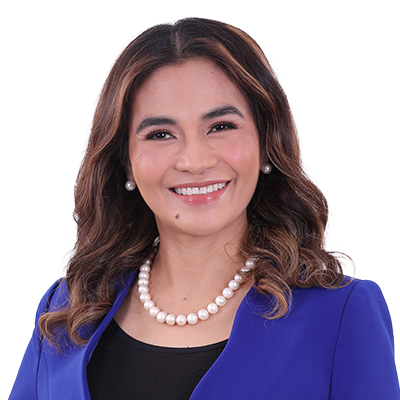-
Audit approach overview
Our audit approach will allow our client's accounting personnel to make the maximum contribution to the audit effort without compromising their ongoing responsibilities
-
Annual and short period audit
At P&A Grant Thornton, we provide annual and short period financial statement audit services that go beyond the normal expectations of our clients. We believe strongly that our best work comes from combining outstanding technical expertise, knowledge and ability with exceptional client-focused service.
-
Review engagement
A review involves limited investigation with a narrower scope than an audit, and is undertaken for the purpose of providing limited assurance that the management’s representations are in accordance with identified financial reporting standards. Our professionals recognize that in order to conduct a quality financial statement review, it is important to look beyond the accounting entries to the underlying activities and operations that give rise to them.
-
Other Related Services
We make it a point to keep our clients abreast of the developments and updates relating to the growing complexities in the accounting world. We offer seminars and trainings on audit- and tax-related matters, such as updates on Accounting Standards, new pronouncements and Bureau of Internal Revenue (BIR) issuances, as well as other developments that affect our clients’ businesses.
-
Tax advisory
With our knowledge of tax laws and audit procedures, we help safeguard the substantive and procedural rights of taxpayers and prevent unwarranted assessments.
-
Tax compliance
We aim to minimize the impact of taxation, enabling you to maximize your potential savings and to expand your business.
-
Corporate services
For clients that want to do business in the Philippines, we assist in determining the appropriate and tax-efficient operating business or investment vehicle and structure to address the objectives of the investor, as well as related incorporation issues.
-
Tax education and advocacy
Our advocacy work focuses on clarifying the interpretation of laws and regulations, suggesting measures to increasingly ease tax compliance, and protecting taxpayer’s rights.
-
Business risk services
Our business risk services cover a wide range of solutions that assist you in identifying, addressing and monitoring risks in your business. Such solutions include external quality assessments of your Internal Audit activities' conformance with standards as well as evaluating its readiness for such an external assessment.
-
Business consulting services
Our business consulting services are aimed at addressing concerns in your operations, processes and systems. Using our extensive knowledge of various industries, we can take a close look at your business processes as we create solutions that can help you mitigate risks to meet your objectives, promote efficiency, and beef up controls.
-
Transaction services
Transaction advisory includes all of our services specifically directed at assisting in investment, mergers and acquisitions, and financing transactions between and among businesses, lenders and governments. Such services include, among others, due diligence reviews, project feasibility studies, financial modelling, model audits and valuation.
-
Forensic advisory
Our forensic advisory services include assessing your vulnerability to fraud and identifying fraud risk factors, and recommending practical solutions to eliminate the gaps. We also provide investigative services to detect and quantify fraud and corruption and to trace assets and data that may have been lost in a fraud event.
-
Cyber advisory
Our focus is to help you identify and manage the cyber risks you might be facing within your organization. Our team can provide detailed, actionable insight that incorporates industry best practices and standards to strengthen your cybersecurity position and help you make informed decisions.
-
ProActive Hotline
Providing support in preventing and detecting fraud by creating a safe and secure whistleblowing system to promote integrity and honesty in the organisation.
-
Accounting services
At P&A Grant Thornton, we handle accounting services for several companies from a wide range of industries. Our approach is highly flexible. You may opt to outsource all your accounting functions, or pass on to us choice activities.
-
Staff augmentation services
We offer Staff Augmentation services where our staff, under the direction and supervision of the company’s officers, perform accounting and accounting-related work.
-
Payroll Processing
Payroll processing services are provided by P&A Grant Thornton Outsourcing Inc. More and more companies are beginning to realize the benefits of outsourcing their noncore activities, and the first to be outsourced is usually the payroll function. Payroll is easy to carve out from the rest of the business since it is usually independent of the other activities or functions within the Accounting Department.
-
Our values
Grant Thornton prides itself on being a values-driven organisation and we have more than 38,500 people in over 130 countries who are passionately committed to these values.
-
Global culture
Our people tell us that our global culture is one of the biggest attractions of a career with Grant Thornton.
-
Learning & development
At Grant Thornton we believe learning and development opportunities allow you to perform at your best every day. And when you are at your best, we are the best at serving our clients
-
Global talent mobility
One of the biggest attractions of a career with Grant Thornton is the opportunity to work on cross-border projects all over the world.
-
Diversity
Diversity helps us meet the demands of a changing world. We value the fact that our people come from all walks of life and that this diversity of experience and perspective makes our organisation stronger as a result.
-
In the community
Many Grant Thornton member firms provide a range of inspirational and generous services to the communities they serve.
-
Behind the Numbers: People of P&A Grant Thornton
Discover the inspiring stories of the individuals who make up our vibrant community. From seasoned veterans to fresh faces, the Purple Tribe is a diverse team united by a shared passion.
-
Fresh Graduates
Fresh Graduates
-
Students
Whether you are starting your career as a graduate or school leaver, P&A Grant Thornton can give you a flying start. We are ambitious. Take the fact that we’re the world’s fastest-growing global accountancy organisation. For our people, that means access to a global organisation and the chance to collaborate with more than 40,000 colleagues around the world. And potentially work in different countries and experience other cultures.
-
Experienced hires
P&A Grant Thornton offers something you can't find anywhere else. This is the opportunity to develop your ideas and thinking while having your efforts recognised from day one. We value the skills and knowledge you bring to Grant Thornton as an experienced professional and look forward to supporting you as you grow you career with our organisation.
“You ate, Mom!”
My young, Gen Z daughters exclaimed, congratulating me for another successful speaking engagement. While my mind initially went to thoughts of food, I realised that my children were referring to how well I did, using slang that they learned from social media.
In the ever-connected world we live in today, it’s not only phrases and trends that go viral; rather, sentiments, ideas, and movements that shape today’s discourse also gain traction online. Digital platforms hold the power to amplify voices, connect communities, and drive change.
While my generation navigated the early stages of this digital transformation, today’s generation is fully immersed in it, and they have the potential to leverage this technology to foster inclusivity and empowerment towards breaking the glass ceiling.
As we celebrate women’s month, let’s acknowledge the progress we’ve made and the work we still need to do to connect generations of women, all towards achieving true gender parity and empowerment in the digital age.
Bridging Generations
Generational divides are an unavoidable and complex issue that we continue to face, both in the workplace and outside it. While it is true that there are fundamental differences in the preferences and outlook of each generation, I believe that finding common ground is the key to bridging this gap.
For example, part of the training new hires may undergo in modern organisations often include a simplified approach on how to deal with these gaps by laying out the differences between generations based on broad generalisations and stereotypes of their working habits and motivations, like millennials and Gen Zs being perceived as more financially motivated or more entitled. An article from McKinsey & Company titled “Gen what? Debunking age-based myths about worker preferences” found that “employees of all ages seem to want the same things from their work experience—with a few important caveats across generations.”
As a leader, I've found that understanding and respecting the diverse perspectives and working styles of different generations is key. For instance, while my generation values traditional work habits and face-to-face interactions, younger generations thrive in a more flexible and digital-first environment. Meeting in the middle may be a long process, but I’m enjoying the process of connecting with my staff and children alike and learning something new from them every day—from my young employees teaching me how to generate A.I. prompts that automate tedious administrative tasks, to my kids demonstrating how to take the “Gen Z Selfie”.
I see these distinctions between generations as an opportunity to learn from each other, leverage diverse perspectives, and create a more inclusive and dynamic world. The responsibility falls onto each and every one of us: understanding, empathy, and a willingness to connect and find common ground will go a long way. Ultimately, the goal remains the same across all ages: developing a diverse, equitable, and inclusive world where everyone feels like they belong.
A Cumulative Effort
Achieving gender parity is not a one-time goal but a cumulative effort that spans generations. Each generation builds on the progress made by the previous one, pushing the boundaries further towards true equality.
When I started off as a homegrown employee of my Firm, P&A Grant Thornton, there were only two female partners, despite its inclusive and welcoming culture. Looking back, there weren’t many discussions on gender parity and women empowerment like there are today, but I was nonetheless able to get the support I needed to achieve my dreams of having a family while having a fulfilling career. I've seen how the support women leaders before me paved the way for my own success.
During my journey, there were moments where I had to compromise because I had to balance being a wife and mother with my many work responsibilities. There came a feeling like I wouldn't be able to reach my goal as a top talent in my work. The turning point was when my daughter got sick: I declined the Firm’s request for me to undergo further studies to progress my career, because I had to care for my daughter. I figured that I wouldn’t be promoted quickly, but I had no regrets as my family is my top priority. During this period, my bosses were so supportive, allowing me to adjust my schedule and attend to my daughter’s needs. This is where my advocacy for empowering my fellow women blossomed: I thought to myself, “We don’t always have to make sacrifices: if they can, she can too.”
Today’s digital world brings out avenues to have these conversations and reach wider audiences. It has also paved the way for hybrid setups which has given opportunities for women to balance work and motherhood, and virtual learning opportunities that encourage them to upskill, no matter where they are. By sharing our stories and experiences, we can inspire and support each other, driving collective action towards achieving true gender parity.
Towards a more connected world
The key takeaway for this year’s Women in Business report by Grant Thornton International is the need for accelerated action towards gender parity. Despite Philippine businesses ranking third among respondent countries in terms of women in senior management, Karitha Erikson of GTI stated that at the current rate of progress, a young woman starting her career today will be working for more than a quarter of a century before she can expect to work at a firm with gender parity in top roles.
As both a mother and a woman leader, the thought that my daughters and future generations of women may still face significant barriers to achieving gender parity strengthens my resolve to advocate for and drive meaningful change. It is our collective responsibility to ensure that the progress we make today paves the way for a more equitable and inclusive future for all women.
Gender parity has always been a moving target, but remember, parity doesn’t necessarily mean a 50/50 or 60/40 split; it’s defined by each company. Each company must set its own targets: it’s about fostering a culture of inclusion and representation, beyond the numbers. Developing that culture and crafting policies that protect, and support women is crucial.
I’d also like to highlight that the fulfilment of a woman is all about achieving a balance between personal and professional life. Today, thanks to the digital landscape we live in, every generation can utilise social media to inspire women that working, nurturing your family, and having work-life integration can be done.
Platforms where women, both young and experienced, can engage in discourse are essential. Coaching and mentoring new women leaders are something I started in the office. These can be done nowadays through digitalization, allowing us to support women wherever they may be. We must use these platforms to our advantage.
To all aspiring female leaders, remember that your journey is unique and valuable. Embrace the challenges, seek out mentors, and leverage the power of technology to connect, learn, and inspire. Generation gaps will always exist – but the fight for diversity, equity, inclusion, belongingness, and parity are universal. Together, we can create a future where women are empowered to lead and make a difference.
As published in The Manila Times, dated 26 March 2025




